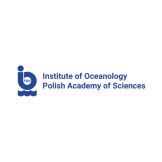CliN-BluFeed
A low CO2 smart autonomous multiplatform system to monitor and forecast Calanus finmarchicus stock - a new sustainable climate neutral blue fish feed
Key facts
Status: ongoing
Duration:
1 May 2024 - 30 Apr 2027
Intervention Area:
PA3 - Climate-neutral, environmentally sustainable and resource-efficient blue food and feed
Contact
Description
The CliN-BluFeed project ambitions to develop and use a low-CO2 smart autonomous multiplatform system to monitor and forecast Calanus finmarchicus stock which is a new sustainable climate neutral blue fish feed for the growing aquaculture industry. The project addresses priority No. 3 "Climate-neutral, environmentally sustainable, and resource efficient blue food and feed" of JPI Oceans SBEP 2023. It covers the three highlighted issues of priority no. 3: (i) reduction of bycatch, (ii) exploration of the potential of low trophic level species in fisheries for fish feed production for the aquaculture industry and (iii) Increasing the supply of blue food by utilizing new sustainable marine resources.
We aim to broaden the spatial, temporal and biological resolution and coverage of C. finmarchicus in-situ monitoring by combining optical and acoustic sensors on autonomous surface (Sailbuoy with echosounder) and underwater (Seaglider & Slocum with UVP6 and echosounder) vehicles and earth-orbiting satellites (LIDAR and RGB). We will use this in-situ data in tandem with ex-situ experimental assays and mechanistic simulation modelling to generate real-time predictions of C. finmarchicus abundance, biomass, population dynamics and the vertical and horizontal distributions of the stock in the Norwegian Sea. The project will: 1) optimize an optical sensor (UVP6) for real-time in-situ identification of C. finmarchicus and other co-occurring plankton and micronekton, and estimation of their abundances and size-structure. 2) characterize the zooplankton and micronekton community characterization and quantification towards identification of potential bycatch composition and reduction of bycatch during harvesting operations using optical and acoustic sensors installed on autonomous vehicles. 3) advance the present understanding of how external environmental variables influence C. finmarchicus vertical behavioral and abundance dynamics during the harvesting season. 4) Describe C. finmarchicus transcriptomic rhythmicity in the field and determine to what extend different environmental cues and internal rhythm regulators drive diel behavior. 5) Map the three-dimensional spatial distributions of C. finmarchicus in the harvesting area using ocean color and LiDAR remote sensing technologies and 6) forecasting of C. finmarchicus stock size and 3D spatial distributions.
The project will deliver processed data products to multiple stakeholders and end users (regulatory agencies, state owned data portal, repository database, fishery etc). CliN-BluFeed will promote a climate neutral fish feed production for a growing aquaculture industry across Europe and the world through the delivery of cutting-edge high-quality data to stakeholders for managing the stock of C. finmarchicus in a sustainable manner. The project will ultimately ensure the growing production of blue food for the European and world population and support the green deal.






